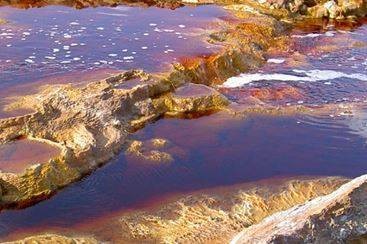Mining is an important activity for obtaining valuable minerals and resources. It forms the basis of various industrial developments. Mining, however, has a significant impact on the environment. It is deforestation, habitat destruction, soil erosion, and various other factors that impact the environment in a negative way. It is as a result of this that the environmental footprint of mining can be quite extensive and long-lasting. Accurately assessing these impacts and developing effective strategies in order to mitigate the impact and implement sustainable practices is quite important.

Assessment of the environmental impact
This is essentially an important tool that helps evaluate the potential environmental impact of a proposed mining project. This process involves many steps, including the identification of environmental conditions, the prediction of potential impacts, and the development of various measures to help mitigate them. It helps understand the possible changes in water quality and air pollution and its effect on local biodiversity. An environmental impact assessment helps make sure that all concerns are addressed and that the project complies with environmental regulations and standards.
Baseline studies and monitoring
Baseline studies help establish the environmental conditions before the mining operation. It provides a reference point when it comes to the assessment of the impact of mining activity. It includes a survey of local flora and fauna, water quality assessment, air quality measurement, analysis of soil and more. Continuous monitoring of environmental conditions helps track changes and promptly identify emerging issues. It is quite important to adopt mitigation strategies and ensure that there are sustainable mining operations Odisha.
Mitigation strategy
These are put in place to help minimise the ecological impact of mining activity.
Land rehabilitation and reclamation is a primary strategy to mitigate the environmental impact of mining. In this process, the affected land is restored or repurposed for agriculture, recreation, and commercial purposes. The aim here is to reduce erosion and improve the visual landscape, making the land usable for future generations.
Water management plays an important role as well. It includes treatment of contaminated water, use of closed water systems, implementation of water management plans and extensive conservation efforts to make sure that the aquatic ecosystems are not extensively impacted and that clean water is available for the local community.
Implementing sustainable practices
Adopting renewable energy sources and efficient mining techniques can significantly reduce the environmental footprint of mining operations. Solar power, wind power, and hydroelectric power can help lower greenhouse gas emissions. Technology such as remote sensing and automated machinery can help with resource management and an efficient approach.
Conclusion
Leading mining industry companies in india, such as Naaraayani Minerals, are looking to invest in clean energy and innovative technology. This is done with the aim of helping the mining industry adopt a sustainable and environmentally friendly approach while keeping up with efficiency and productivity. Sustainability and minimising environmental impact are key factors. As the industry evolves, embracing these practices will become crucial for it to remain beneficial for both the industry and the various communities it affects.
